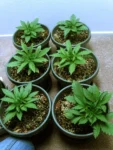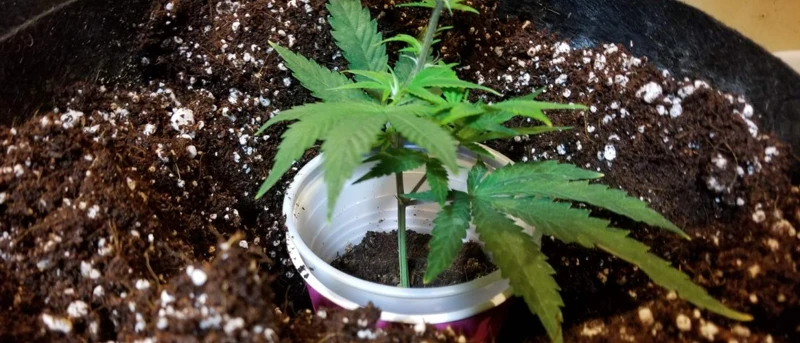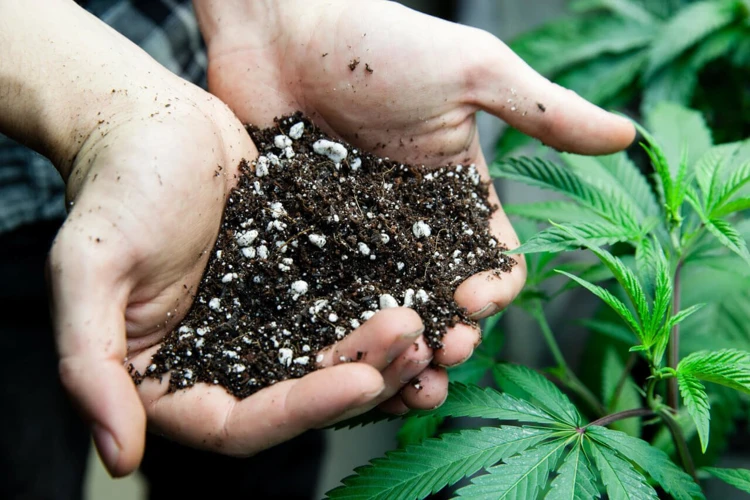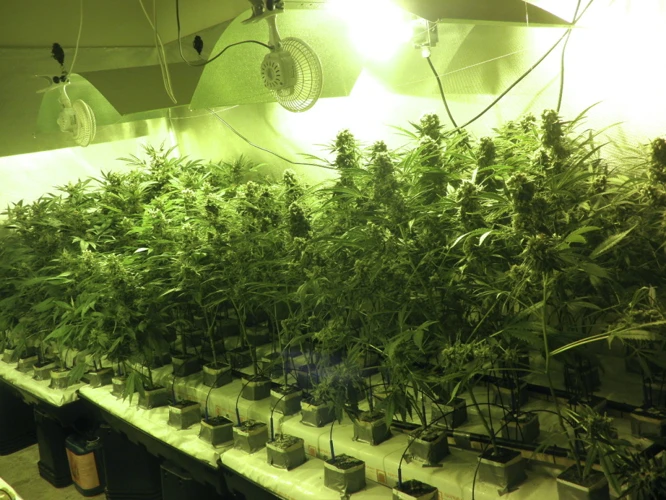
Best Practices for Reusing Coco Coir for Multiple Cannabis Harvests
As cannabis cultivation continues to grow in popularity, growers are looking for cost-effective and eco-friendly solutions to maximize their yields. One such solution is reusing coco coir, a commonly used growing medium made from coconut husks. But many growers may be perplexed about how to properly reuse coco coir, leading to questions about its effectiveness and potential drawbacks. In this article, we will explore the benefits of reusing coco coir, as well as best practices for preparing, caring for, and harvesting this versatile medium for multiple cannabis grow cycles.
Why Reuse Coco Coir
Contents
If you’re a cannabis grower, you’re likely aware of the importance of having a high-quality growing medium. Coco coir is a popular choice among growers due to its numerous benefits, including water retention and aeration. But did you know that you can reuse coco coir for multiple cannabis harvests? This may sound unusual, but there are several compelling reasons why you should consider doing so. Reusing coco coir can lead to significant environmental benefits, cost savings, and an overall improved growing medium. Let’s take a closer look at each of these benefits.
Environmental Benefits
Reusing coco coir for multiple cannabis harvests offers significant environmental benefits.
- Reduces waste: By reusing coco coir, you reduce the amount of waste in landfills. Coco coir is a natural and biodegradable material, but it still takes up space in landfills if not properly disposed of.
- Conserves water: Coco coir is an excellent water retainer and minimizes water runoff, making it a sustainable alternative to other growing mediums that require more water. By reusing coco coir, you decrease the need for additional water and help to conserve this vital natural resource.
- Reduces carbon footprint: Coco coir is a renewable resource that is harvested from coconut husks. By reusing it, you reduce the need for new batches of coco coir to be produced and shipped, which in turn reduces the carbon footprint associated with production and transportation.
- Preserves natural habitats: Coconut trees provide a valuable ecosystem for many species of animals and plants. By reusing coco coir, you reduce the demand for new coconut products, which helps to protect habitats and preserve biodiversity.
When you reuse coco coir, you’re not only benefiting your plants but also contributing to a more sustainable and environmentally conscious approach to cannabis cultivation.
Cost Savings
One of the major reasons to consider reusing coco coir is the potential cost savings it offers compared to constantly buying new growing mediums. Here are some ways in which reusing coco coir can save growers money:
- Reduced cost of purchasing new growing medium: By reusing coco coir instead of buying new soil, growers can save money on the cost of constantly purchasing new growing medium for their cannabis plants.
- Decreased water and nutrient usage: Over time, the structure of coco coir becomes more efficient at holding onto water and nutrients, which means growers can use less of these resources to achieve the same results.
- Lower disposal costs: When growers consistently throw away old coco coir after one use, they may face additional costs for disposing of this waste. By reusing coco coir, growers can reduce the frequency with which they must dispose of used growing mediums and save money on these costs.
There are many benefits to reusing coco coir, including financial advantages that can help cannabis growers save money in the long run. However, it is important to remember that proper care and maintenance are crucial for ensuring the continued effectiveness of reused coco coir growing mediums. By following the best practices outlined in this article, growers can achieve sustainable, cost-effective growing practices that support both their businesses and the environment.
Improved Growing Medium
When it comes to growing cannabis, having a high-quality growing medium can make all the difference in achieving a successful harvest. Fortunately, reusing Coco Coir as a growing medium has several benefits that can help improve the quality of your cannabis plants.
1. Better Water Retention: Coco Coir is known for its excellent water holding capacity, which means it can retain water for longer periods of time. This can benefit cannabis plants by ensuring that they have a consistent supply of water, even during droughts or dry spells.
2. Improved Aeration: Coco Coir also provides excellent aeration to cannabis roots. Its porous structure allows air to flow freely, providing roots with the oxygen they need to thrive. This improved aeration can also help prevent overwatering and root rot.
3. Increased Nutrient Absorption: Coco Coir is naturally low in nutrients, but it can be amended to provide the right balance of nutrients for cannabis plants. When used as a growing medium, Coco Coir can help improve nutrient absorption, leading to healthier plants with higher yields.
4. Reduced Risk of Disease: Unlike soil, Coco Coir is an inert growing medium that is free from many of the pathogens and pests that can harm cannabis plants. By using sterilized Coco Coir and practicing good hygiene habits, you can reduce the risk of disease and ensure a healthy harvest.
5. Reuse and Sustainability: Reusing Coco Coir as a growing medium can help reduce waste and promote sustainability. By properly preparing and caring for Coco Coir between grow cycles, you can extend its lifespan and reduce the need for new growing media.
Reusing Coco Coir as a growing medium can provide several benefits that can help improve the health and yield of your cannabis plants. With proper care and maintenance, Coco Coir can be an effective and sustainable option for growers at all levels.
Preparing Coco Coir for Reuse
As an environmentally conscious and cost-effective grower, you might consider reusing your coco coir for multiple cannabis harvests. However, before you can reuse your coco coir, it’s essential to properly prepare it for another cycle. This process involves thorough cleaning and sterilization, as well as balancing the pH and nutrient levels in the medium. In this section, we’ll discuss the best practices for preparing your coco coir for reuse, so you can maximize your yields and minimize your environmental impact.
Cleaning and Sterilization
When reusing coco coir for cannabis grows, proper cleaning and sterilization is crucial to ensure a healthy and productive growing medium. Here are some steps to follow:
- Remove plant debris: Before starting the cleaning process, remove any remaining plant debris from the coir. This can be done by hand or using a soft brush.
- Rinse with water: Rinse the coir thoroughly with water to remove any remaining dirt or nutrients. Use a fine-mesh sieve to ensure all debris is removed.
- Soak in a cleaning solution: Create a cleaning solution using a mixture of water and hydrogen peroxide or a mild bleach solution. Soak the coir in the solution for at least 30 minutes.
- Rinse again: After soaking, rinse the coir again with clean water to remove any traces of the cleaning solution.
- Dry completely: Spread the coir out in a dry, sunny location or use a dehumidifier to dry it out completely. Ensure there is no moisture left in the coir before storing it for future use.
Following these steps will help to prevent any harmful bacteria or fungi from developing in the coco coir, which could potentially harm your plants. Proper cleaning and sterilization will also help to restore the coir’s natural pH levels and nutrient content, providing a healthier growing medium for your cannabis plants.
Balancing pH and Nutrient Levels
To reuse coco coir for multiple cannabis harvests, it is essential to balance pH and nutrient levels carefully. Proper balance can result in healthy plants and a better yield. Some factors affect the pH and nutrient levels of coco coir, including previous use, water quality, and fertilizers from previous crops.
Measuring pH and Nutrient Levels
Before reusing coco coir, it is necessary to check its pH and nutrient content. A pH level of 5.5 to 6.5 is optimum for cannabis growth. Nutrient levels in coco coir depend on the previous crop’s fertilizer regime.
To measure the pH and nutrient levels, use a soil pH meter, and water testing kits. A soil pH meter is an affordable tool that measures pH levels quickly. Water testing kits are also available to check water quality.
Adjusting pH and Nutrient Levels
To balance the pH and nutrient levels, coco coir needs pre-treatment. This process involves rinsing the coir with water and soaking in a pH-balancing solution.
To prepare a pH-balancing solution, mix water with a pH adjuster like dolomite lime or potassium hydroxide. Add the solution to the coir and mix it until the pH level reaches the preferred range.
Nutrients can also be added to the coir during this process, but it is crucial to use appropriate amounts. Over-fertilizing can lead to salt buildup, which can harm the plant’s roots.
The table below summarizes the steps to balance pH and nutrient levels in coco coir:
| Step | Description |
|---|---|
| Measure pH and Nutrients | Use a soil pH meter and water testing kits to check the pH and nutrient content of coco coir. |
| Rinse with Water | Soak the coir in water for 24 to 48 hours to remove any remaining nutrients or minerals from previous crops. |
| Soak in pH-Balancing Solution | Mix water with a pH adjuster like dolomite lime or potassium hydroxide. Soak the coir in this solution until the pH level reaches the preferred range. |
| Add Nutrients | If necessary, add nutrients to the coir during the soaking process. |
Conclusion
Balancing pH and nutrient levels are crucial for reusing coco coir for multiple cannabis harvests. Coco coir’s pH and nutrient levels are affected by factors such as water quality, fertilizers, and previous crop usage. Measuring pH levels and adjusting with a pH-balancing solution is necessary. Additionally, careful management of nutrient use can ensure that the plants grow healthily, producing a high yield.
Caring for Coco Coir During Grow Cycles
As you continue to use coco coir for multiple cannabis harvests, proper care during the grow cycles becomes crucial for ensuring optimal plant growth and yield. How you monitor and adjust nutrient levels, water your plants, and prevent disease and insect infestations all play a crucial role in the success of your grow. In this section, we will explore some best practices for caring for your coco coir during the grow cycles to help you achieve your desired results.
Regular Monitoring and Adjustments
Regular monitoring and adjustments are essential for successful reuse of coco coir. Here are some important steps for monitoring and adjusting coco coir during grow cycles:
- Measure pH levels: pH levels in coco coir can change over time, so it’s important to monitor pH regularly. Aim for a pH level of around 5.5-6.5 for cannabis plants.
- Monitor nutrient levels: Keep an eye on the nutrient levels in the coco coir. As the nutrients are used up by the plants, they may need to be replenished. Test nutrient levels regularly, and adjust your nutrient feeding schedule accordingly.
- Adjust watering schedule: The watering needs of cannabis plants can change over time, especially during different stages of growth. Monitor moisture levels in the coco coir and adjust watering frequency as needed.
- Observe plant health: Cannabis plants can be quite sensitive to changes in the growing medium. Keep a close eye on plant health, and if you notice any issues, such as wilting or yellowing leaves, adjust your coco coir maintenance routine.
- Conduct regular flushes: To avoid nutrient buildup and maintain healthy plants, conduct regular flushes of the coco coir. Flushing involves running clean water through the grow medium to remove excess nutrients and salts.
By regularly monitoring and adjusting the coco coir during grow cycles, you can maximize its reusability and create ideal growing conditions for your cannabis plants.
Watering and Nutrient Application
Watering and Nutrient Application
Maintaining proper moisture levels and nutrient application is essential for reusing coco coir successfully.
Watering:
– Monitor Moisture Levels: Use a moisture meter to regularly check the moisture level of the coco coir. The ideal moisture range is between 40-60%.
– Don’t Overwater: Overwatering can lead to nutrient lockout and increased risk of disease. Only water when the coco coir has reached the lower end of the moisture range.
– Apply Water Slowly: Pour water slowly over the surface of the coco coir to prevent flooding and ensure even distribution.
Nutrient Application:
– Use Balanced Nutrient Solution: During reuse, coco coir may have leftover nutrients, so it’s essential to check the pH and nutrient levels regularly. Use a balanced nutrient solution to prevent nutrient deficiencies or excesses.
– Add Nutrients Slowly: Start with a lower concentration of nutrients and gradually increase to prevent overfeeding.
– Be Mindful of Nutrient Buildup: Avoid adding too many nutrients that can cause buildup leading to nutrient lockout, and monitor the overall nutrient levels in the coco coir.
By following these practices for watering and nutrient application, you will be able to extend the life of your coco coir as a growing medium for multiple cannabis harvests.
Preventing Disease and Insect Infestations
When reusing coco coir for multiple cannabis harvests, it’s important to take measures to prevent disease and insect infestations. This can help ensure the health and productivity of your plants, as well as extend the lifespan of your coco coir. Here are some best practices for preventing disease and insect infestations when reusing coco coir:
| Practice | Why It’s Important |
|---|---|
| Sanitizing Tools and Equipment | Tools and equipment can harbor disease-causing pathogens or insect eggs, which can transfer to your coco coir and infect your plants. |
| Starter Plants | Using healthy starter plants can help prevent the introduction of diseases or pests into your grow environment. |
| Biosecurity Measures | Practicing good biosecurity measures can help prevent the introduction and spread of diseases and pests among your plants, such as quarantining new plants before introducing them to your grow space. |
| Avoiding Overwatering | Overwatering can create a damp and humid environment that can attract pests and promote the growth of fungal or bacterial diseases. |
| Using Beneficial Microbes | Beneficial microbes can help prevent the growth of harmful pathogens and promote a healthy root system in your plants. |
| Quarantining Infected Plants | If you notice any signs of disease or pest infestation, it’s important to quarantine the affected plants and treat them before they infect others in your grow space. |
By incorporating these best practices into your grow cycles, you can help prevent disease and insect infestations when reusing coco coir for multiple cannabis harvests. This can ultimately lead to healthier, more productive plants and cost savings over time.
Harvesting and Storing Coco Coir
After several successful cannabis harvests using your reusable coco coir, it’s time to gather and store it properly for your next grow cycle. Coco coir is a natural and sustainable growing medium that can be reused multiple times with the right care and attention. In this section, we will explore the essential steps for harvesting and storing coco coir to ensure its longevity and effectiveness as a growing medium. Let’s dive in!
Harvesting Techniques
When it comes to harvesting coco coir for reuse, there are a few techniques you can use to ensure you get the most out of your growing medium. Here are some effective harvesting techniques to try:
- Handpicking: This technique involves manually picking out any remaining plant matter from the coco coir. You can use gloves to protect your hands and a small rake or trowel to help loosen any debris. Be sure to remove any large roots, stems, or other debris that may have accumulated in the growing medium.
- Flushing: Flushing involves flushing the coco coir with water to remove any remaining salts or nutrients from the previous grow cycle. Simply flood the growing medium with fresh water and let it drain out completely. Repeat this process a few times to ensure that all remaining nutrients have been flushed away.
- Baking: Another effective technique is to bake the coco coir in the oven to kill any remaining pests or pathogens. Place the coco coir in a shallow baking pan and bake at a temperature of 180 degrees Fahrenheit for about 30 minutes. You can then cool the coco coir before reusing it.
- Composting: If you have a compost bin, you can add used coco coir to it to break down over time. Simply mix the coco coir in with other compostable materials, such as kitchen scraps and yard waste, and allow it to decompose. The resulting compost can then be used to enrich garden soil or potting mixes.
By using one or more of these harvesting techniques, you can effectively prepare your coco coir for reuse in future grow cycles. It’s important to take the time to properly harvest and store your coco coir to ensure that it remains a healthy and effective growing medium for your cannabis plants.
Storing for Future Use
After you have harvested your cannabis plants, it’s important to store the coco coir properly so that it’s ready for future use. Storing coco coir involves a few key steps, as detailed in the table below:
| Step | Description |
|---|---|
| 1. Dry | Before storing, make sure the coco coir is thoroughly dry. Spread it out on a tarp or in a well-ventilated area and allow it to air dry for several days. |
| 2. Store in a Sealed Container | Once the coco coir is completely dry, store it in a sealed container to protect it from moisture and pests. A plastic bin with a tight-fitting lid works well. You can also use large sealable bags. |
| 3. Label and Date | It’s important to keep track of when you harvested and stored the coco coir. Label the container with the date and any other relevant information, such as the type of plants that were grown in it. |
| 4. Store in a Cool, Dry Place | Store the container in a cool, dry location that’s protected from direct sunlight. A basement, garage, or closet works well. Avoid storing the coco coir in a humid area, as this can cause it to mold or decay. |
| 5. Rehydrate Before Use | When you’re ready to use the coco coir again, you’ll need to rehydrate it. Simply add water and allow it to absorb until it’s moist and fluffy again. |
By following these steps, you can effectively store your coco coir and ensure that it’s ready for use in future grows. Properly stored coco coir can last for several years, making it a cost-effective and eco-friendly growing medium for cannabis cultivation.
Conclusion
After learning about the benefits of reusing coco coir for multiple cannabis harvests and the proper steps for preparing and caring for it, growers can take a more sustainable and cost-effective approach to cultivation. By reducing waste and improving the quality of the growing medium, growers can not only save money but also lessen their environmental impact.
It’s important to note that while reusing coco coir is a great practice, it is not a magic solution that can replace good cultivation practices. Regular monitoring, adjusting pH and nutrient levels, and preventing disease and insect issues are all important factors in maintaining healthy and productive plants.
Overall, reusing coco coir is a smart and responsible choice for cannabis growers looking to improve their practices. By following the best practices outlined in this article, growers can enhance the quality and quantity of their harvests while contributing to a more sustainable and eco-friendly industry.
Frequently Asked Questions
Can Coco Coir be Reused?
Yes, coco coir can be reused for multiple cannabis harvests if properly maintained and cared for.
What are the Environmental Benefits of Reusing Coco Coir?
Reusing coco coir helps reduce waste and conserves natural resources, making it an eco-friendly option for cannabis cultivation.
How Does Reusing Coco Coir Save Costs?
Using the same coco coir for multiple harvests eliminates the need to purchase new growing medium each time, resulting in significant cost savings.
What Improvements can be Seen in Coco Coir when it is Reused?
Reusing coco coir for multiple harvests can improve its water holding capacity, aeration, and overall quality as a growing medium.
How Do You Clean and Sterilize Coco Coir for Reuse?
Coco coir can be cleaned with water and a mild detergent, then sterilized with a solution of hydrogen peroxide and water.
Why is Balancing pH and Nutrient Levels Important for Reusing Coco Coir?
Proper pH and nutrient levels help ensure healthy plant growth and prevent nutrient deficiencies or toxicities when reusing coco coir.
What Should You Monitor and Adjust When Reusing Coco Coir?
You should monitor pH levels, nutrient levels, and watering frequency, adjusting as necessary to maintain optimal growing conditions.
What is the Proper Watering and Nutrient Application Method for Reused Coco Coir?
Water and nutrients should be applied slowly and evenly to the coco coir to prevent nutrient runoff and ensure even distribution throughout the medium.
How Do You Prevent Disease and Insect Infestations When Reusing Coco Coir?
Proper sanitation and sterilization techniques, as well as regular pest monitoring, can help prevent disease and insect infestations when reusing coco coir.
What is the Proper Method for Harvesting and Storing Reused Coco Coir?
Harvested coco coir should be thoroughly dried and stored in a cool, dry place until ready for reuse.





